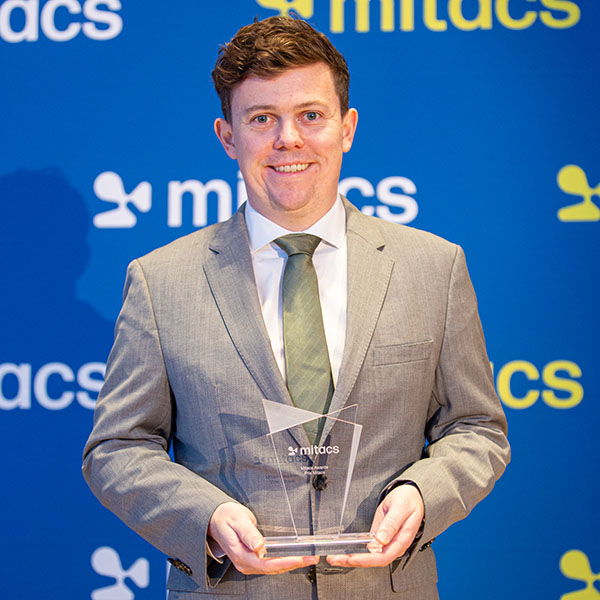
Vancouver researcher recognized for next gen microchips
By CM Staff
Electronics Embedded Systems Semiconductors Engineering Mitacs research semiconductors UBCMitacs presents commercialization award to UBC student Matthew Mitchell
University of British Columbia (UBC) researcher Matthew Mitchell has always enjoyed tinkering at the nanoscale, working with devices the width of a strand of hair or less. Now, his passion to push scientific boundaries has brought him to UBC spin-off Dream Photonics where he is helping to advance a new era in microchips that use photons (light) and electrons, opening up new possibilities for quantum computing, faster and smarter wearable devices, and self-driving vehicles that use laser beams for navigation.
The cutting-edge work has earned Mitchell the Mitacs Award for Commercialization, awarded by Mitacs, a national organization that fosters growth by solving business challenges with research solutions from academic institutions and supported by the Government of British Columbia.

Matthew Mitchell, a postdoctoral researcher in the Stewart Blusson Quantum Matter Institute at the University of British Columbia, earned the Mitacs Award for Commercialization for his work to advance a new era in microchips that use photons (light) instead of electrons. Mitchell’s breakthrough — a unique method for 3D printing optical structures called wave guides — solves a critical packaging challenge facing the emerging photonics industry, making it possible to reliably and efficiently connect photonic chips to other components, and opening up new possibilities for quantum computing, faster and smarter wearable devices, and self-driving vehicles. Source: Mitacs
Mitchell — a postdoctoral researcher working under the supervision of Dream Photonics co-founder Lukas Chrostowski and Professor Jeff Young at UBC’s Stewart Blusson Quantum Matter Institute — is being recognized for using a novel technique to 3D print optical structures called waveguides, making it possible to connect photonic chips reliably and efficiently to other components, including optical fibres, photonic integrated circuits, and lasers, like the remote sensing lasers used in emerging LiDAR navigation systems. The innovative technique, called photonic wire bonding, is enabling the company to offer a first-of-its-kind prototyping service to companies working to innovate with the next-generation chips.
Mitchell’s work is also helping to advance quantum computing
“One of the biggest bottlenecks in photonics is packaging, figuring out how to get light in and out of the chips in an efficient way so that they can make reliable connections,” explained Mitchell, noting that most photonic packaging solutions are costly and limited by technical challenges related to scaling. “Our technology overcomes the packaging challenge, making these very tiny photonic chips scalable in real-world applications,” he said.
Mitchell’s work is also helping to advance quantum computing by exploring ultra-low loss methods for packaging the photonic chips being used to build quantum computers, where every photon counts.
“Quantum computing is a field of science that makes it possible to get solutions to extremely difficult problems virtually instantaneously,” he said. “One example is the protein folding problem in biology, the complex process of figuring out a single protein’s structure that cannot be solved with classical computers.”
The Mitacs Award for Commercialization is presented to a Mitacs intern for an idea brought from research that is now available on the market or soon to be commercialized. Mitacs is supported by funding from the Government of Canada and provincial and territorial governments across the country.
